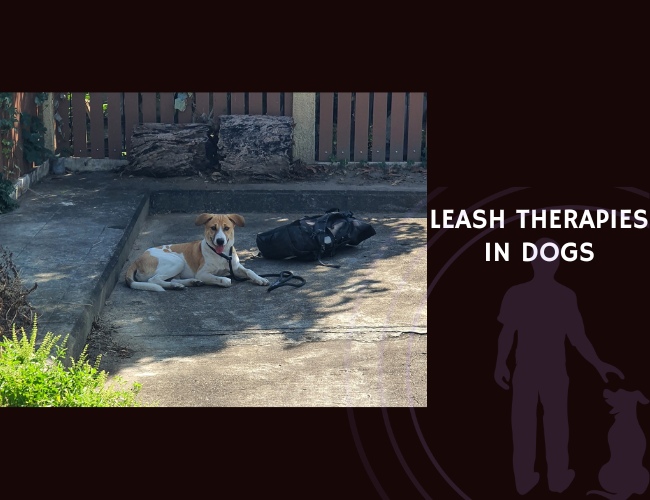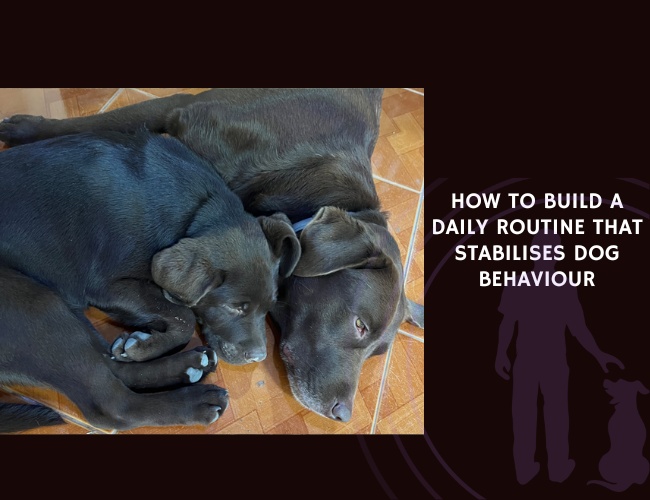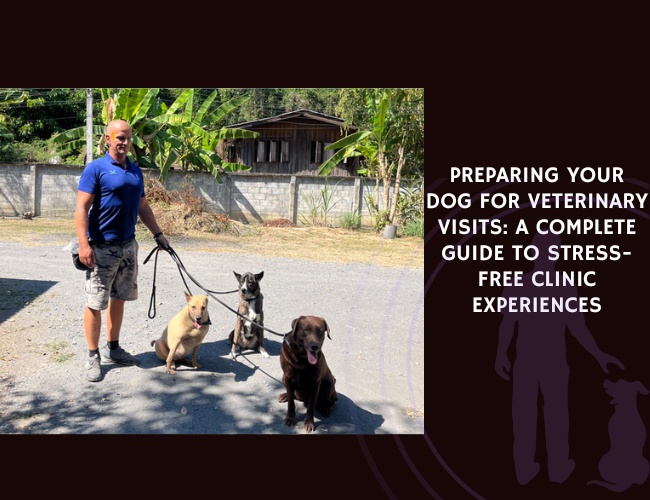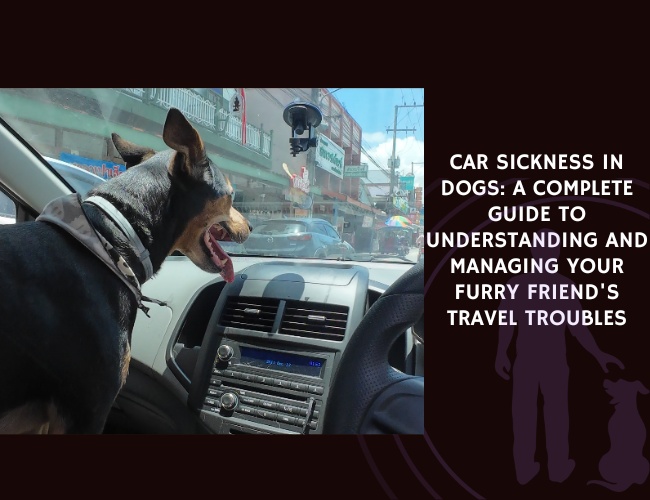Understanding Leash Therapies in Dog Training
In the realm of dog training, a concept gaining traction for its effectiveness is leash therapy. This approach extends beyond mere restraint and delves into fostering a communicative bridge between human and canine. At its core, leash therapy isn’t about control—it’s about conversation. A well-conducted leash therapy can open a dialogue with your furry friend, making it an indispensable tool in teaching and healing.
Communication: The Heart of Leash Therapy
Let’s ponder this: How does a simple leash become a therapeutic device? It begins with acceptance—recognizing that dogs have their language based on instinctual behavior. When we engage them through leash-leading methods, we tap into this language. This strategy brings us to their level of understanding, allowing for a more profound connection and immediate progress in behavior modification. For us, functioning communication is paramount, and without it, substantial therapy is unattainable.
Breed-Specific Evaluations and Developmental Stages
Now, imagine approaching a Husky and a Chihuahua with the same expectations. It wouldn’t be practical, would it? That’s why assessing each dog’s breed-specific origins is critical. These evaluations help in understanding their natural inclinations and behaviors. Similarly, recognizing the developmental stages of your dog ensures that the therapy is age-appropriate and conducive to learning. Clear guidelines for social behavior stem from this understanding, enabling us to set boundaries while still respecting their need for exploration and freedom.
By integrating leash therapy into training, we’re not just teaching commands; we’re guiding our dogs towards desirable behaviors. The leash acts as an extension of our intentions, signaling what’s ‘right’ or ‘wrong’ and what’s ‘desirable’ or ‘undesirable.’ This clarity helps dogs understand their boundaries within our shared world and nurtures their social intelligence.
The Role of Leash in Establishing Communication and Agreement
In the realm of dog training, the leash is far more than a simple restraint; it’s a vital communication channel. Much like words allow humans to exchange ideas, the leash serves as a non-verbal dialogue between a dog and its owner. This conduit of instruction and feedback is essential for guiding dogs towards socially desirable behaviors.
Leash as an Essential Communication Tool
Consider the leash your lifeline to understanding and shaping your dog’s conduct. It operates on the principle of immediate feedback, where the tension and slack on the leash convey approval or disapproval. Through consistent use, dogs begin to associate certain leash cues with ‘right’ or ‘wrong’ actions. A gentle tug can mean ‘no,’ while a slack leash paired with positive reinforcement signals ‘well done.’ By using the leash in this communicative way, owners can effectively guide their dogs in real-time, teaching them which behaviors are desirable and which are not.
Establishing Clear Behavioral Agreements
To foster a well-behaved and socially adept dog, it’s imperative to set clear boundaries. The leash becomes a tool of agreement, reinforcing these boundaries consistently. For instance, pulling on the leash means stop, and walking with a loose leash indicates correct behavior. These leash-guided agreements shape a dog’s understanding of appropriate conduct. It’s not just about control—it’s about cultivating an intuitive grasp of right and wrong in your dog’s mind through repetitive, comprehensible guidance.
Through this method, dogs learn to navigate the world in a way that is acceptable to both their nature and societal expectations. When owners correctly employ leash therapy, they enable their four-legged companions to express their personalities within the parameters of good behavior.
Guiding Social Behaviors with the Leash
Leash therapy extends beyond behavioral do’s and don’ts—it also encourages positive social interactions. For example, when meeting new people or other dogs, the leash can guide the dog to approach calmly rather than jumping excitedly. These controlled experiences contribute to better social skills, making outings more enjoyable and less stressful for everyone involved. By mastering the nuances of leash communication, owners can help their dogs become well-adjusted and polite members of the community.
Ultimately, consistent leash therapy teaches dogs to trust the guidance of their owners, resulting in harmony and mutual understanding. It’s a dance of sorts, where each partner understands their role and moves in sync with the other, creating a bond that enhances their relationship significantly.
Incorporating leash therapy into your training regimen can lead to remarkable transformations in behavior. Dogs learn to interpret the world around them, respond to their owners’ cues, and act in socially acceptable ways, all through the language of the leash. By doing so, you’re not only ensuring your dog’s safety but also paving the way for a more trusting and fulfilling partnership.
Leadership and Trust in Leash Therapies
In the realm of dog training, leadership is far more than just a concept; it’s the cornerstone of effective communication and behavior modification. When we delve into leash therapies, the role of the handler as a leader becomes paramount. A leader is seen not as an enforcer but as a guide who navigates the canine through the complexities of human expectations and social norms.
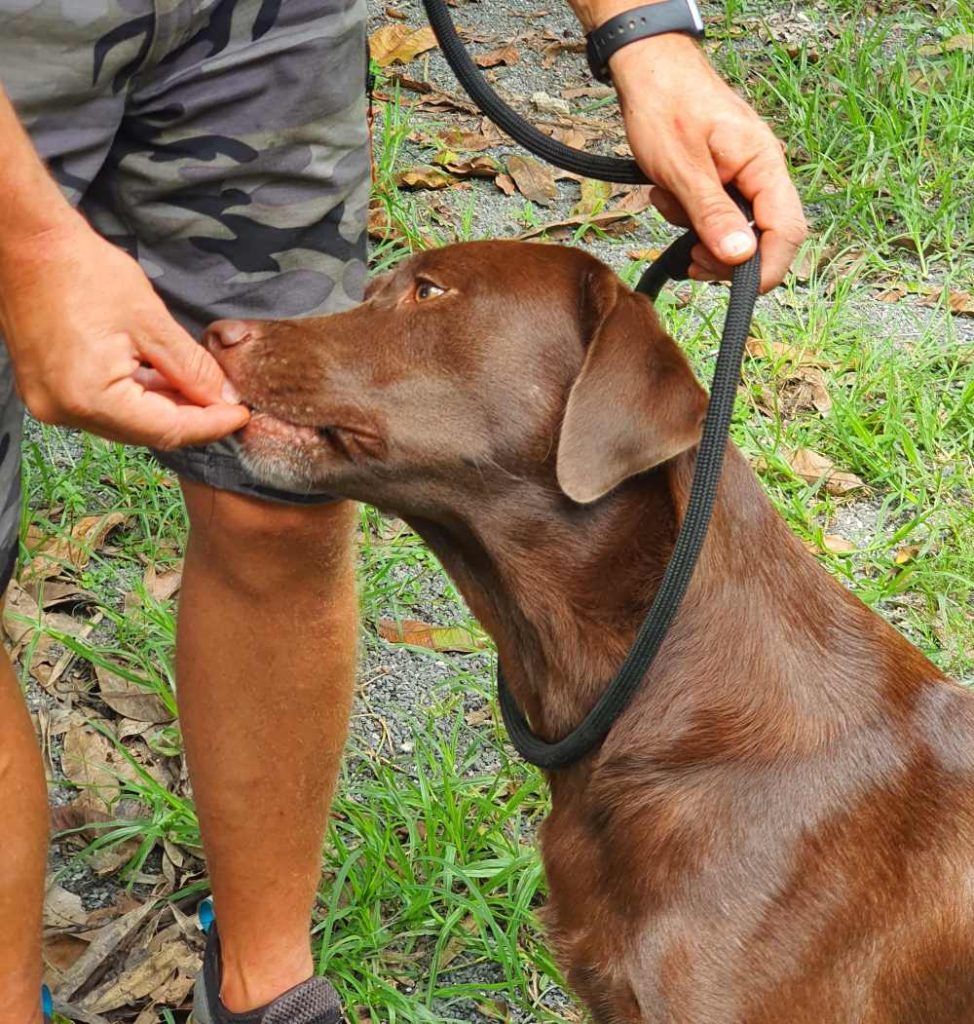
The Qualities of a Leader in Canine Communication
The qualities necessary for a person to be a true leader to their dog are multifaceted. Firstly, consistency is key. Dogs are creatures of habit, and they respond well to predictable patterns of interaction. A leader must also embody calm confidence, providing a secure presence that a dog can trust and follow. In addition, understanding the unique language of dogs – their cues and behaviors – allows for more nuanced and effective guidance.
Within the context of leash therapy, the use of the leash is symbolic of the invisible bond of leadership and guidance. The leash acts as a communication channel through which a leader can gently steer the dog towards acceptable behaviors while avoiding conflict or fear. It’s not about physical control but about mutual understanding and cooperation.
Building Mutual Trust and Respect
Trust is the foundation upon which any relationship is built, and this is no different in the world of dogs and their humans. During leash therapy sessions, when a dog feels secure in their owner’s leadership, they are more likely to exhibit trust and a willingness to learn. This trust is cultivated through positive reinforcement, patience, and respect for the dog’s pace of learning and comfort levels.
Respect is a two-way street. Just as we expect our canine companions to heed our guidance, we must also respect their needs and signals. By paying attention to what a dog is trying to communicate – whether it’s discomfort, excitement, or curiosity – we honor their individuality and build a deeper bond grounded in mutual respect.
Comprehension, the final piece of the puzzle, involves fully understanding a dog’s behavior, motives, and reactions. With comprehension comes the ability to anticipate and positively influence behaviors, making leash therapy not just about correcting unwanted actions but about fostering a deeper connection with our four-legged friends.
Impact of Early Experiences on Dog Behavior
The early stages of a dog’s life are not just about growth and fun antics. They are an essential period that shapes their long-term behavior and social skills. Like humans, dogs are profoundly influenced by their early experiences and the environment they grow up in. This impact extends to various aspects of their life, including their ability to interact with other dogs, humans, and how they respond to a variety of situations.
Significance of Early Experiences
From birth until about 14 weeks of age, puppies undergo several developmental stages where their brains are incredibly receptive. During this time, they learn vital behavioral cues from their mother, siblings, and human handlers. If a puppy is removed too soon from its litter or lacks exposure to humans and other dogs, it can lead to abnormal or underdeveloped social behaviors. Such dogs may react to other dogs as if they’re encountering them as a foreign species later in life, displaying fear or aggression instead of playfulness or curiosity.
Lack of contact with people during these first few months can also result in a lifelong fear of strangers. This is particularly important when considering leash therapies, as trust and comfort with humans are foundational to successful training. For instance, if a dog has spent the early weeks of its life in a secluded kennel, far from city noises, it may develop noise sensitivity or fear-related aggression. These formative experiences underscore the need for thoughtful interaction and exposure during a puppy’s critical learning phase.
Imprinting and Imprint-like Learning in Dogs
Imprinting is a term we often associate with birds, but dogs experience a similar process known as imprint-like learning. In the early phase of a dog’s life, typically during the first three to fourteen weeks, puppies absorb everything in their environment and begin to establish patterns that can last a lifetime. This can range from positive behaviors, like toilet training and basic commands, to less desirable ones, such as fear or aggression towards unfamiliar stimuli.
Understanding this concept is crucial for trainers and dog owners alike. It informs us that the window for teaching a dog what to fear, what to enjoy, and how to behave in social settings is small but critical. Properly managed, this period can lead to a well-adjusted dog capable of fitting into various social scenarios comfortably. Conversely, negative or insufficient experiences during this period can set the stage for behavioral challenges that might require more intensive interventions later on.
In practice, addressing behavioral problems often involves understanding and modifying the dog’s early experiences. For example, treating fear aggression could be about creating positive associations and reducing fear in anxiety-provoking situations rather than trying to suppress the aggressive behavior outright.
Integrating External Influences in Leash Therapies
In the realm of leash therapies, it’s not just about the physical tether between dog and owner; it’s a conduit for addressing deeper behavioral complexities. As we delve into this topic, we consider how external factors play a pivotal role in molding canine behavior. Imagine a world where every dog’s conduct is shaped not only by their genetic makeup but by the intricate dance with their surroundings. This is the stage where leash therapies shine, integrating both intrinsic tendencies and environmental cues to cultivate socially adept dogs.
Addressing Behavioral Mechanisms and Environmental Cues
Leash therapies are not just about controlling a dog’s movements. They are about understanding and influencing the inherent behavioral mechanisms that drive those movements. Dogs, like humans, come with a set of instinctual behaviors. However, these instincts can clash with the expectations and norms of human society. Leash therapies serve as a bridge, guiding dogs to navigate this gap and learn what behaviors are considered acceptable. It’s a dynamic process, blending the dog’s natural inclinations with consistent, gentle guidance. The leash becomes an extension of the owner’s will, a subtle yet powerful communicator of “yes” and “no,” steering the dog toward approved social etiquette.
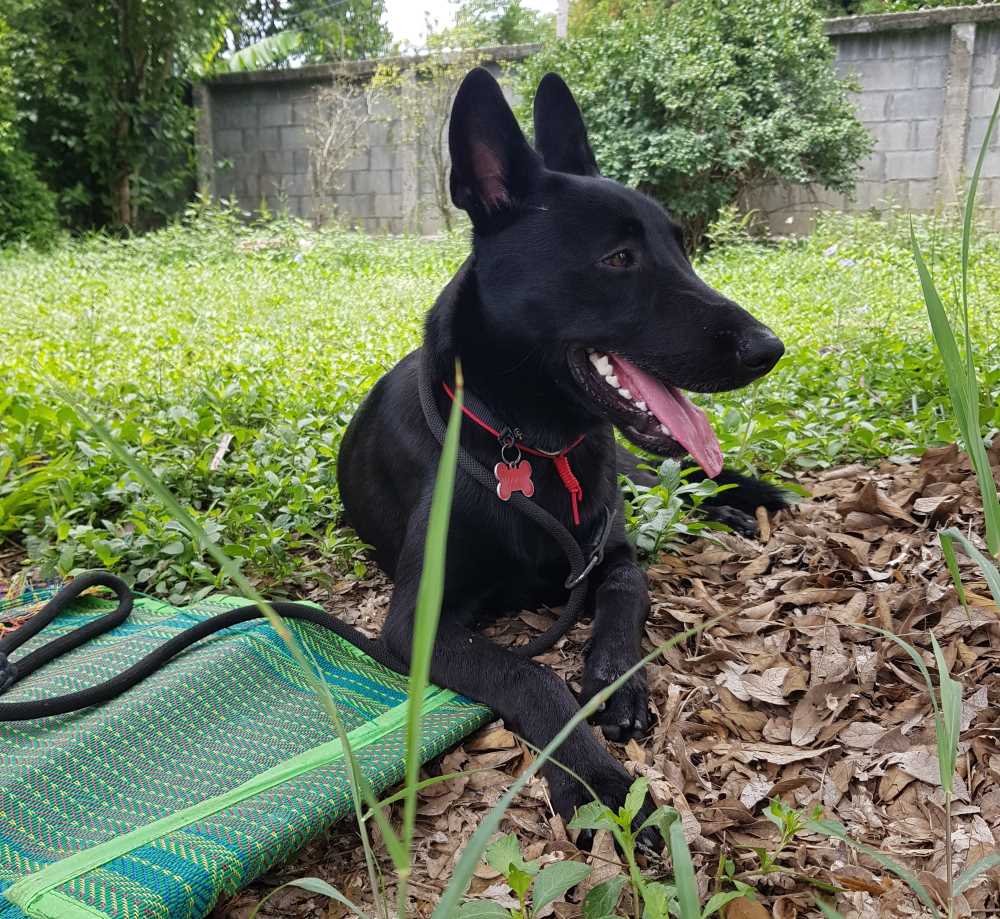
The Role of Exercise and Socialization
Lack of adequate exercise and limited social contact with other dogs can lead to a plethora of issues, from pent-up energy manifesting as destructive behavior to social ineptitude or even aggression. The leash is not just a tool for control but also a means to ensure that dogs receive the necessary physical activity and social exposure. Integrating exercise and socialization into leash therapy sessions is crucial. A well-exercised dog on a leash is more likely to be focused and responsive, ready to absorb positive interactions and learn from each encounter. Socialization, too, when done under controlled conditions through leash work, helps dogs understand how to behave around their peers, an essential skill for preventing future behavioral problems.
Imagine the leash as a teacher’s pointer, highlighting lessons not just for the dog but for the owner as well. It signals the need for regular walks, playtime, and interaction with other dogs. These activities are not optional extras; they are foundational elements that support the overall goal of developing a well-adjusted canine citizen. By incorporating these aspects into leash therapy, we address the root causes of many behavioral issues rather than merely managing their symptoms.
As we near the end of this section, let us reflect on the intertwining threads that make up the fabric of effective leash therapies. It’s a tapestry woven with the threads of understanding behavioral science, nurturing through leadership, and creating an environment ripe for learning. Leash therapies are not a one-size-fits-all solution but a tailored approach that considers the uniqueness of each dog and their interaction with the world. By integrating both the internal drives and external influences, we pave the way for harmonious dog-human relationships, ensuring our canine companions thrive in our shared spaces.
Conclusion
In our exploration of leash therapies for dogs, we’ve uncovered the layers and complexities that turn a simple leash into a powerful tool for communication and behavioral change. We’ve seen how it stands as a conduit for establishing rules and guidelines, helping dogs to distinguish between ‘right’ and ‘wrong’ behaviors. Rooted in the understanding of breed-specific traits and developmental stages, leash therapies can be tailored to individual dogs, ensuring progress that is both meaningful and lasting.
Leadership and trust form the core of this approach, with the leash acting as a symbol of guidance rather than dominance. By harnessing these elements, owners step into their roles as leaders, fostering trust and respect with their canine companions. This method of therapy relies on mutual understanding, building a bedrock of communication that is essential for any successful dog training program.
Early experiences play an undeniable role in shaping a dog’s personality and behavior. Recognizing this, leash therapies incorporate these foundational aspects, addressing issues like fear-related aggression through compassionate and informed practices. Such interventions are not just about obedience but aim at creating well-adjusted, sociable pets who are capable of integrating seamlessly into the human world.
Addressing external factors such as exercise and socialization is also paramount in leash therapy. These components are vital in curbing undesirable behaviors and promoting mental and physical health. Therefore, successful leash therapy encompasses a holistic approach, considering every influence that could affect a dog’s demeanor.
Embrace the Potential of Leash Therapies
Now, let us turn our insights into action. By embracing leash therapies, we open a gateway to enhanced communication, deeper bonds, and improved behavior in our dogs. This method is not merely about walking your dog but about educating them on how to navigate the human world with confidence and calmness.

To all dog owners, trainers, and enthusiasts: consider the possibilities that leash therapies offer. Whether you’re dealing with a stubborn puppy or an adult dog set in their ways, these techniques can unlock potential you may never have imagined. It is a journey worth embarking on, one that promises to enrich the lives of both you and your furry friend.
Picture the joy of a peaceful walk with your dog trotting contentedly by your side, the satisfaction of seeing them interact politely with others, and the pride in knowing you’ve both achieved this through trust, respect, and clear communication. This vision can become your reality with leash therapies.
Take the Next Step
So, what’s stopping you from taking this transformative step in your dog’s life? Begin today. Start by assessing your dog’s specific needs, learn the principles of leash therapy, and apply them with consistency and patience. Remember, each moment spent with your dog is an opportunity to reinforce the positive behaviors that leash therapies nurture.
Embark on this path, and watch as your dog grows into a well-behaved, well-adjusted member of your family. The bond you build will be stronger for it, and the benefits—immeasurable. Let the leash be more than a restraint; let it be the lifeline that connects you and your dog in understanding and harmony.

